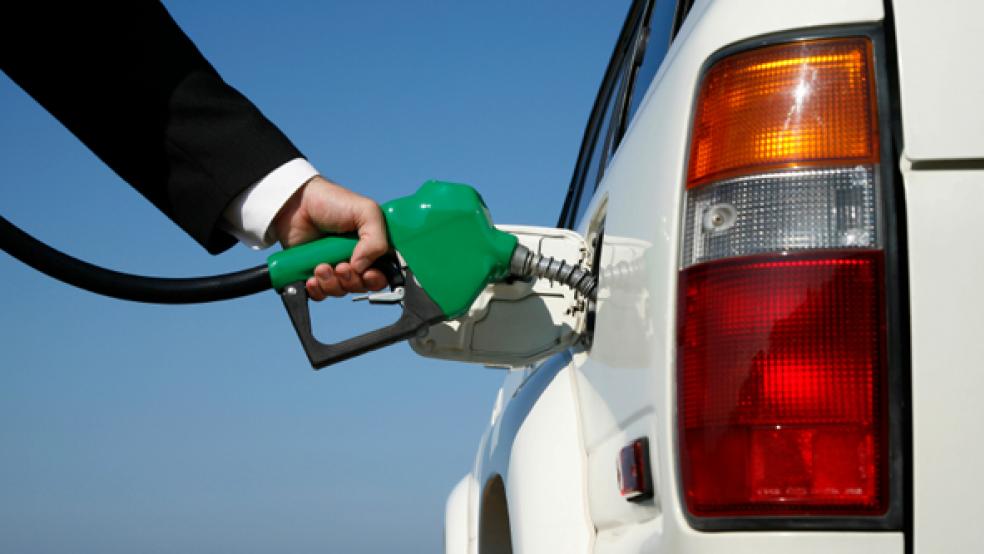Like most Americans, Susan Zappa says $4-a-gallon gas is weighing heavily on her finances. Aside from the extra money she shells out just to make trips to the grocery store in her hometown of Springfield, Illinois, she says inflated gas prices are posing a much bigger challenge when it comes to running her small business.
RELATED: High Gas Prices? Blame Goldman Sachs
Zappa owns American Ambulance Service, Inc., which employs about 50 paramedics and emergency medical technicians who collectively field anywhere from 8,000 to 10,000 emergency medical calls and 911 calls in Springfield every year. Unlike full-time firefighters who occupy their quarters between calls, Zappa’s 10 ambulance rigs drive around different neighborhoods throughout the city, in order to be nearby when somebody needs help and to be first in line for 911 assignments, since dispatchers use the closest-car concept to assign ambulances.
“Being out and ready, using fuel to keep rigs on the road, is how we get business. So it’s a little tough in this industry to drastically do anything different,” says Zappa. “I always knew fuel was an important part of my business – but gas this expensive, with little or no relief in sight, was kind of blindsiding for me.”
A FINANCIAL BIND
Last Friday gas prices dipped to a national average of $3.88, about six cents less than they were two weeks earlier. Experts say that trend is likely to continue over the next few weeks and that prices have probably peaked.
Still, Zappa is one of millions of transportation-reliant small business owners grappling with higher-than-expected gas prices overall, a situation that can lead to a financial bind all the way down the supply chain. Larger businesses have felt the burn as well. But the typically lower profit margins of small businesses, plus an inability to pass along fuel surcharges to others, means they’re stuck with higher gas bills.
RELATED: Will a Price Hike Result from Obama’s Oil Plan?
“Small businesses don’t have the same type of pricing power to negotiate with delivery companies like Fed-Ex or UPS, or even manufacturers of raw materials,” says Leslie Levesque, an economist with IHS Global Insight. When a manufacturer ships something to a small business, or a small business ships with a large carrier, it’s fairly straightforward for the larger firm to tack on surcharges, Levesque said. “But in the case of a Walmart, no supplier is going to say, ‘We’re passing on these higher prices to you.’ They don’t want to lose that business.”
As a result of the pressure, small firms are holding off on hiring decisions, and in some cases are preparing to hike their prices. According to a survey in March by the National Federation of Independent Businesses, higher fuel costs ranked as the number one business problem, with 21 percent of the owners surveyed saying they plan to increase prices for their products and services in the next few months.
A similar small business study released last week by the U.S. Chamber of Commerce found that 24 percent of businesses with 500 or fewer employees said high gas costs was their number one concern, up from 10 percent in January.
Mark Hagar, a printing and office-and-school supply company owner based in Fort Wayne, Indiana, says he’s been trying to buy inventory in bulk to squeeze down his fuel expenses. He’s also trying to stretch out the time his company can go without needing to pay for air carrier and ground transportation for office products like envelopes, white boards, and classroom products to all 50 states. His transportation costs, he says, have gone up by 15 to 20 percent in the last year alone. “Buying in bulk has dipped heavily into our cash flow, but it’s legitimately one of the only choices available to us to deal with tremendous gas costs,” he says.
RELATED: How Fuel Efficient Cars Drive Up Gas Prices
That’s partly because his company, Specialized Printing Products, publishes a catalog once a year with shipping rates listed. “So as fuel prices have gone up and I’ve seen more surcharges added, we can’t pass that along to customers.” Hagar says just three or four months ago he had planned to add to his 20-person staff since orders are up – but now he’s holding off.
Zappa has also struggled to balance the higher gas prices with her operational costs. She says her fuel costs rose more than $70,000 in 2011 compared to 2010, and she anticipates taking an even greater hit in 2012. She has reluctantly decided to scale back 401(k) and profit-sharing benefits for her employees; she’s cutting back on purchasing new ambulatory equipment; and she might even have to end her employee training licensing programs next year, she says.
“It’s really kind of sad for me. Our employees are required to have so many hours of training for license renewal every four years, which I try to fund here so they don’t have to pay for that out of their pockets,” she says. “I’d love to figure out a way to cover the higher gas costs another way, but I can’t exactly charge more for services or add a surcharge to cover it. Insurance providers, Medicare and Medicaid – they don’t care if our gas prices go up. They just wouldn’t reimburse us.”


